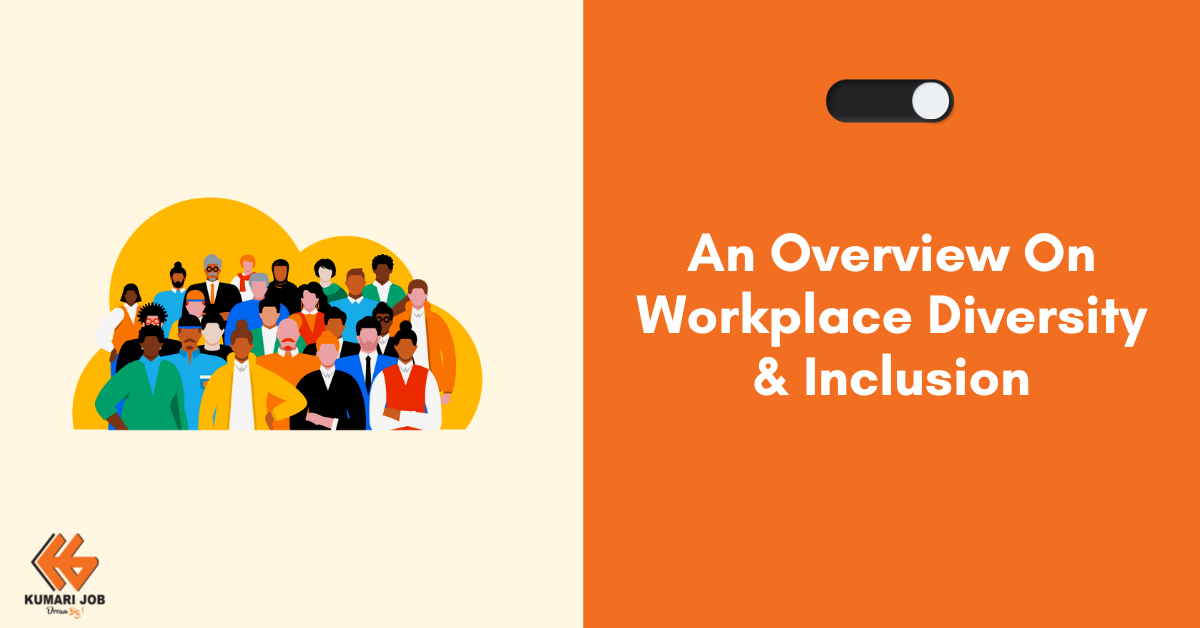
Workplace diversity refers to the variety of differences among employees in an organization, including but not limited to race, ethnicity, gender, sexual orientation, age, religious beliefs, and abilities.
The main objective of workplace diversity is to create an inclusive work environment where everyone feels valued and respected, regardless of their differences. This leads to increased creativity, innovation, and better decision-making, as well as improved job satisfaction and higher morale among employees.
An Overview on Workplace Diversity
Workplace diversity is recognizing and valuing differences among employees in an organization. Workplace diversity aims to foster an environment where everyone, regardless of differences, feels accepted. To achieve workplace diversity, organizations can implement policies and programs that promote equal opportunities and inclusiveness, as well as educate employees about the importance of diversity and cultural sensitivity.
A diverse workforce brings different perspectives and experiences to the table, which can lead to better problem-solving and decision-making. The competition in this globalized world is fierce and thus, requires an innovative and creative idea to stand out from the crowd. A diverse workforce can lead to new ideas and innovative solutions, as different perspectives and experiences are brought to the workplace. When employees feel valued and included, they are more likely to be engaged and motivated in their work, leading to improved job satisfaction and higher morale.
5 Benefits of Workplace Diversity and Inclusion
The benefits of workplace diversity and inclusion include:
- Improved business performance: A diverse and inclusive workplace can lead to increased creativity and innovation, better decision-making, and improved customer satisfaction.
- Enhanced reputation: Companies that are known for promoting diversity and inclusion are often viewed more favorably by both employees and customers.
- Increased employee engagement and morale: When employees feel valued and included, they are more likely to be engaged and motivated in their work, leading to improved job satisfaction and higher morale.
- Better talent attraction and retention: Companies that promote diversity and inclusion are more likely to attract and retain a diverse range of top talent.
- Legal compliance: Workplace diversity and inclusion is often a legal requirement, and organizations can face significant penalties if they are found to be in violation of anti-discrimination laws.
Thus, promoting workplace diversity and inclusion can lead to a more inclusive work environment, improved business performance, and enhanced reputation, as well as improved employee engagement, morale, and retention.
If you are looking for a diverse work culture, Kumari Job on a daily basis lists different jobs in Nepal, from various industries. From startups to MNCs, you can find various job vacancy in Nepal for freshers and well as professionals.
FAQ’s
What is Diversity?
Diversity refers to the existence of variations of different characteristics in a group of people.
Why is Workplace Diversity Important?
Workplace diversity is more prone to creativity and innovation which increases employee activities and satisfaction towards work. A diverse workforce is important as it increases employee engagement, decreases employee turnover, fosters a better problem-solving mindset, declines conflicts, and many more.
What are the types of Diversity?
There are four types of Diversity: Internal, External, Organizational, and Worldwide Diversity.
What are the best ways to promote workplace diversity?
The best ways to promote workplace diversity are to educate managers about the benefits of a diverse workforce, implement inclusive workplace policies, conduct mentorship programs, offer workplace flexibility, etc.









Loading Comments...